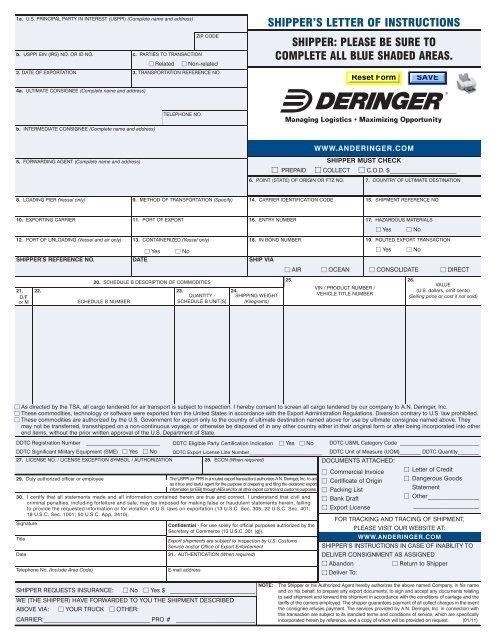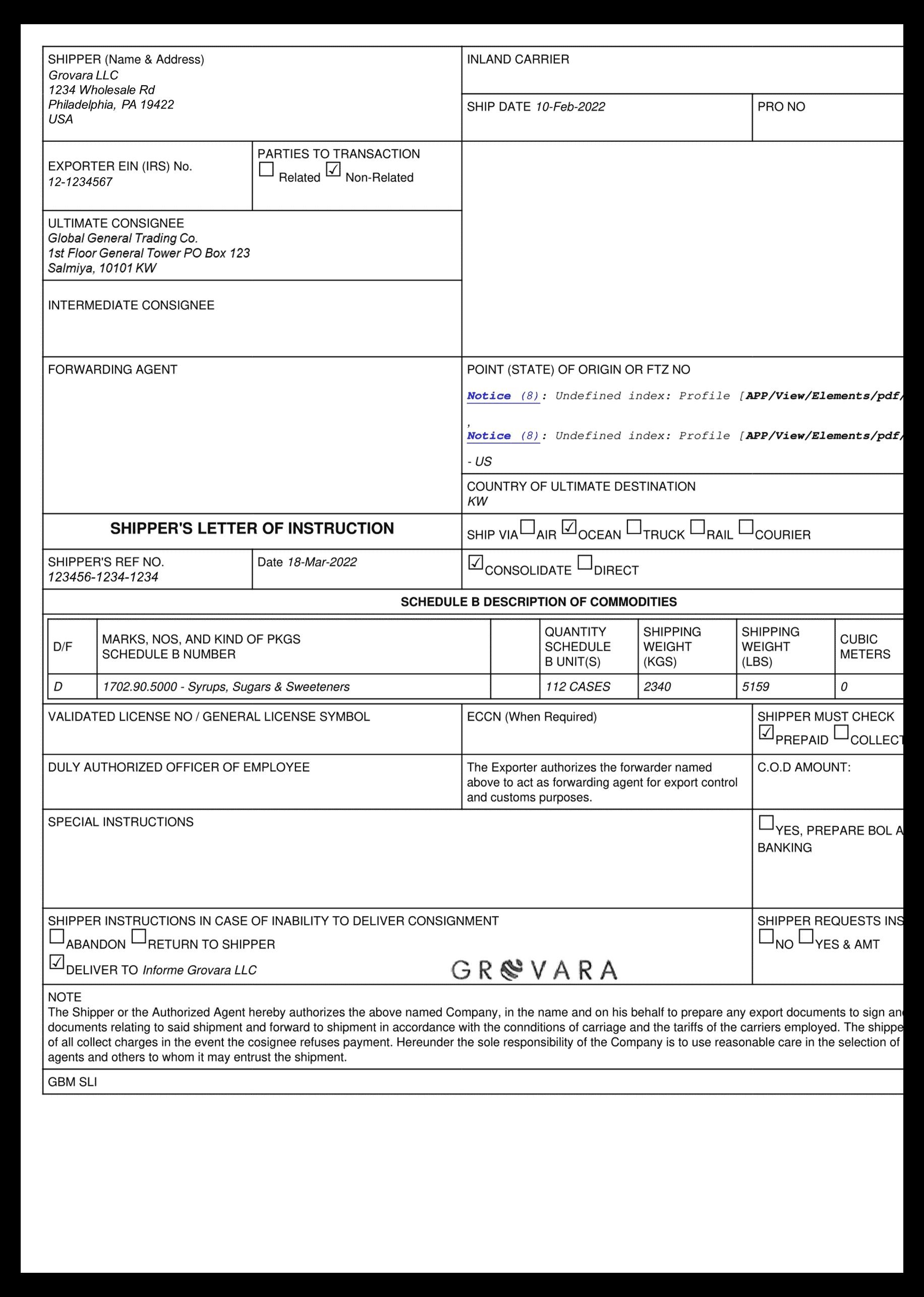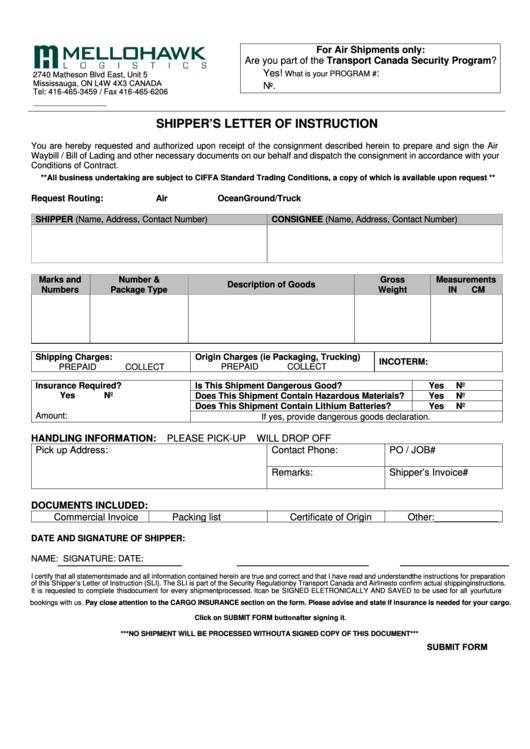
What is a Shippers Letter of Instruction (SLI)?
A Shippers Letter of Instruction (SLI) is a crucial document providing detailed instructions to freight forwarders for handling export shipments․ It ensures smooth processing and compliance with regulations․
Definition and Purpose
The Shippers Letter of Instruction (SLI) serves as a comprehensive guide for freight forwarders, outlining precise instructions for managing the export shipment․ It acts as a formal authorization from the exporter, detailing the shipment’s specifics and empowering the forwarder to act on their behalf․ This document streamlines the entire shipping process, minimizing potential errors and delays․ The SLI is not legally mandated everywhere, but its use is highly recommended and often required by freight forwarders․ It acts as a detailed order form and proof of purchase from the forwarder, ensuring clear communication and minimizing misinterpretations between the exporter and their agent․ By providing a standardized set of instructions, the SLI guarantees efficient handling of goods, from origin to destination․
Key Information Included in an SLI
A comprehensive SLI includes crucial details such as the shipper and consignee’s complete contact information, precise descriptions of the goods being shipped (including quantity, weight, and value), detailed packaging specifications and any special handling requirements․ It also specifies the shipping marks and numbers, the intended mode of transportation (air, sea, or land), and the complete pickup and delivery addresses․ Importantly, the SLI should clearly state the Incoterms (International Commercial Terms) used, outlining responsibilities for costs and risks․ Additionally, it may include instructions for customs clearance, export license numbers (if applicable), and any special instructions for handling hazardous materials․ The inclusion of a Bill of Lading/Air Waybill number once issued, is also crucial․ Finally, the document needs authorized signatures and dates for verification and legal validity․

SLI⁚ Benefits and Importance
SLIs streamline shipping, minimize errors and delays, and ensure compliance with export regulations, facilitating efficient international trade․
Streamlining the Shipping Process
The Shippers Letter of Instruction (SLI) acts as a central hub for all shipment details, eliminating the need for multiple communications and reducing potential misunderstandings between the exporter and the freight forwarder․ By providing comprehensive instructions upfront, the SLI ensures that the freight forwarder has all the necessary information to handle the shipment efficiently from origin to destination; This clear communication minimizes delays caused by missing information or conflicting instructions, leading to a smoother and more predictable shipping process․ The streamlined workflow resulting from the use of an SLI reduces administrative overhead for both the exporter and the freight forwarder, allowing them to focus on other critical aspects of their businesses․ The clear and concise nature of the SLI also minimizes the risk of errors during the shipping process, contributing to faster transit times and reduced costs․
Minimizing Errors and Delays
A well-prepared Shippers Letter of Instruction (SLI) significantly reduces the likelihood of errors and delays in the shipping process․ By providing complete and accurate information upfront, the SLI eliminates the need for the freight forwarder to seek clarification or make assumptions, which are common sources of error․ The detailed instructions on packaging, handling, and labeling in the SLI minimize the risk of damage or loss during transit․ Furthermore, the SLI’s clear communication of customs and export regulations helps avoid delays caused by non-compliance․ The unambiguous instructions on pick-up and delivery locations and times also contribute to on-time arrival․ This proactive approach, facilitated by the SLI, ensures a smoother, more predictable shipping experience, reducing the potential for costly delays and disruptions to the supply chain․ The comprehensive nature of the SLI ensures that all parties involved are on the same page, minimizing the possibility of miscommunication and related problems․
Creating an Effective SLI
Crafting a comprehensive SLI requires precise details⁚ clear instructions, accurate product descriptions, and precise contact information for seamless freight forwarding․
Essential Information for Freight Forwarders
The Shippers Letter of Instruction (SLI) serves as a comprehensive guide for freight forwarders, outlining all necessary details for efficient shipment processing․ Crucial information includes the shipper and consignee’s complete contact details, ensuring clear communication throughout the process․ Precise descriptions of the goods, including quantity, weight, dimensions, and any special handling requirements, are essential; Accurate HS codes and relevant export license numbers, if applicable, must be included to ensure compliance with customs regulations․ The SLI should also specify the desired mode of transportation, incoterms, and any specific instructions regarding loading, unloading, and insurance coverage․ This ensures clarity and avoids delays or errors during the shipment’s journey․
Specific Instructions and Requirements
Beyond basic shipment details, the SLI allows for the inclusion of specific instructions crucial for successful delivery․ These might involve specifying preferred carriers, routing preferences, or the need for special handling due to fragile goods or hazardous materials․ Detailed packaging instructions, including materials and labeling requirements, ensure the goods arrive undamaged․ The SLI can also include instructions regarding documentation, such as the required number of copies of commercial invoices or certificates of origin․ Time-sensitive deliveries necessitate clear deadlines and instructions for expedited processing․ Any specific requirements related to insurance coverage, customs procedures, or other regulatory compliance should be explicitly stated within the SLI to ensure a smooth and efficient export process․ Clear communication via the SLI minimizes misinterpretations and potential delays․
SLI and Export Regulations
The Shippers Letter of Instruction (SLI) plays a vital role in ensuring compliance with export regulations and customs procedures, facilitating smoother international trade․
Compliance with Export Control and Customs
A properly completed Shippers Letter of Instruction (SLI) is essential for meeting export control and customs regulations․ It provides the necessary information for freight forwarders to accurately classify goods, determine licensing requirements, and prepare the correct documentation for customs clearance․ Failure to comply can lead to significant delays, penalties, and even seizure of goods․ The SLI ensures that all relevant details, such as the commodity’s classification number and any export license numbers are included, allowing for a streamlined and compliant export process․ The accuracy of this information is critical for efficient processing by customs authorities in both the exporting and importing countries․ By providing clear and comprehensive instructions, the SLI minimizes the risk of non-compliance and its associated consequences․ This proactive approach ensures a smoother and more efficient export process, protecting both the exporter and the importer from potential issues․
Electronic Export Information (EEI) Filing
The Shippers Letter of Instruction (SLI) plays a vital role in the electronic filing of Export Information (EEI) via the Automated Export System (AES)․ Many modern SLIs are designed to include the specific data elements required for AES submission, simplifying the process for both the exporter and the freight forwarder․ This integration streamlines the reporting process, ensuring timely and accurate submission of export data to U․S․ Customs and Border Protection (CBP)․ The SLI acts as a central hub, consolidating all necessary information, including product details, destination, and other crucial data points․ This ensures a complete and accurate EEI filing, minimizing the risk of errors and potential delays caused by incomplete or inaccurate information․ A well-structured SLI simplifies the complexities of EEI submission, allowing for efficient processing and compliance with regulatory requirements․ Its use is highly recommended for exporters seeking a smooth and compliant export experience․

SLI Templates and Formats
Various SLI templates and formats exist, including standard versions and specialized formats like SED and NCBFAA, catering to diverse needs and regulatory requirements․
Standard SLI Templates
Standard Shippers Letter of Instruction (SLI) templates offer a basic framework for outlining essential shipment details․ These templates typically include sections for shipper and consignee information, product descriptions (including quantity and weight), packaging specifications, shipping instructions (mode of transport, delivery address), and required documentation․ While convenient for straightforward shipments, standard templates may lack the specific fields needed for complex or regulated goods․ The simplicity of standard templates makes them easily adaptable, but users should ensure all necessary information is included to avoid delays or complications․ Remember to always verify compliance with relevant export regulations before using any template․
Specialized SLI Formats (e․g․, SED, NCBFAA)
Beyond standard templates, specialized Shippers Letter of Instruction (SLI) formats cater to specific regulatory needs and industry practices․ The SED (Shipper’s Export Declaration) format, for example, is crucial for US exports, incorporating detailed commodity information required for compliance with export control regulations and Electronic Export Information (EEI) filing․ Similarly, the NCBFAA (National Customs Brokers & Forwarders Association of America) format often includes fields tailored to customs brokerage procedures․ These specialized formats ensure accurate data capture, streamline customs clearance, and minimize the risk of penalties for non-compliance․ Selecting the appropriate format is crucial for efficient and legally sound export operations․ Using a format that doesn’t meet regulatory requirements can lead to significant delays and financial repercussions․